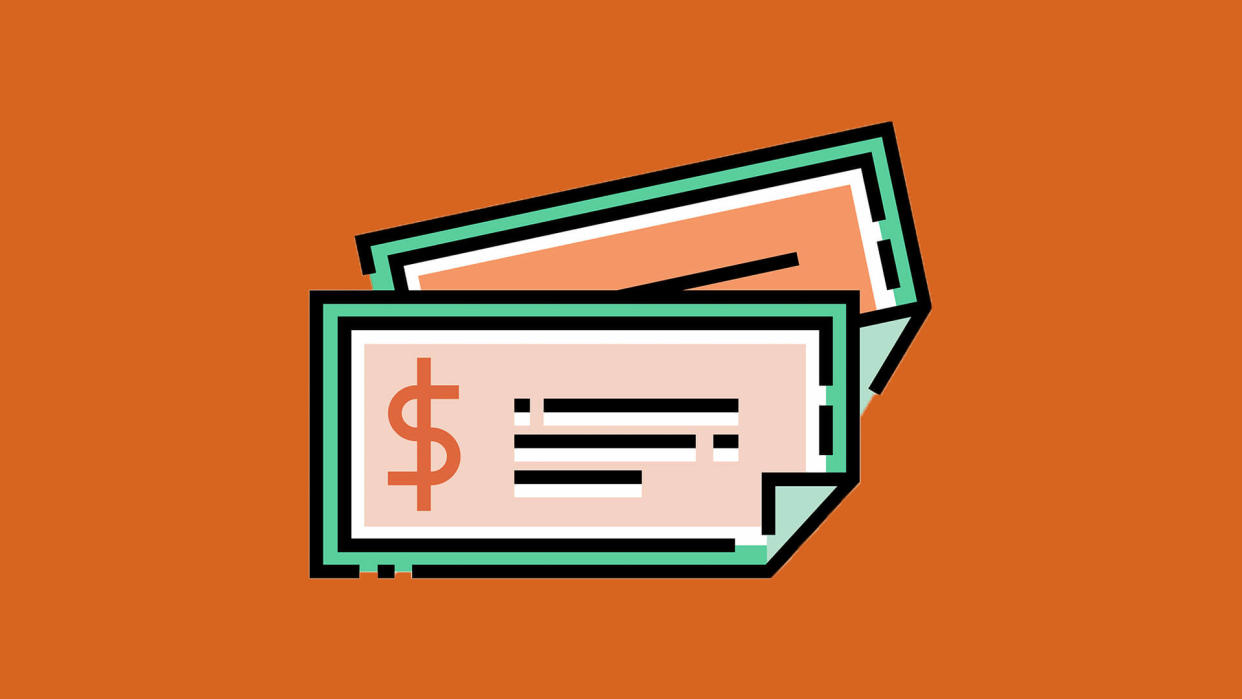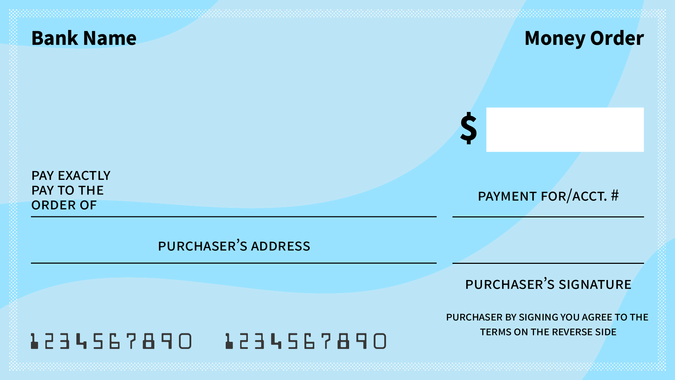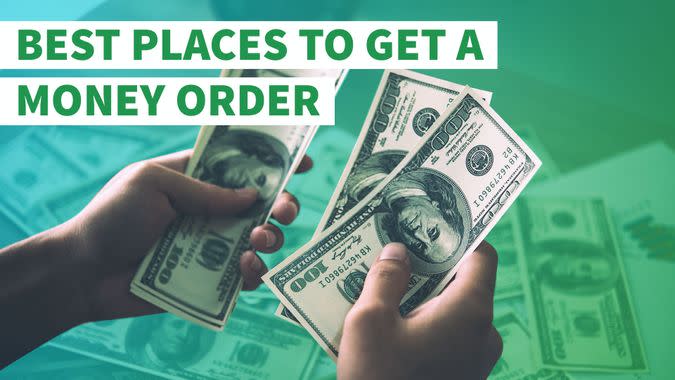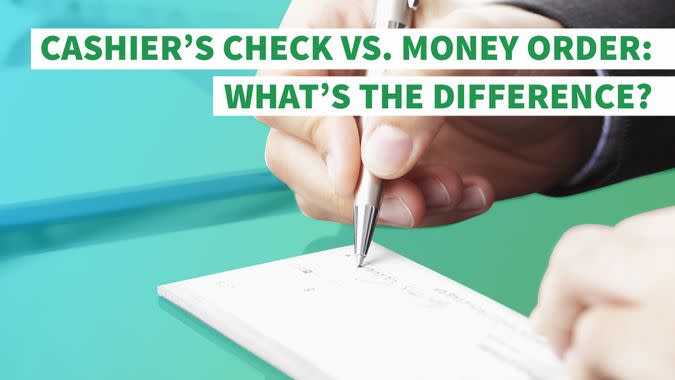What Is a Money Order? See How Easily You Can Get One

While it would be nice to have one form of payment for everything, it’s not always so convenient. Sometimes the person you’re paying doesn’t want the liability of paper money, or it’s important to keep your personal banking information hidden. Other times, payment apps and electronic transfers just can’t take the place of cold, hard cash.
Important: 50 Ways To Live the Big Life on a Small Budget
Know: 101 Easy Ways To Save Money Daily
In moments like these, a money order can save the day. A money order is a form of payment that people can use to pay bills or make purchases. Here’s a deeper look at what a money order is and why you might need one.
What Is a Money Order?
Money orders are a form of payment printed on a piece of paper that looks similar to a check.

Unlike a check, a money order is prepaid with cash. Money orders are useful when you need to send payment through the mail.
How Does a Money Order Work?
Paying for goods or services with a money order is a simple process. You pay the vendor in cash or with a debit card, who then issues you the money order.
Once you have the money order in hand, you can fill it out and send or deliver it to the recipient. The recipient can cash or deposit the money order just like a check.
Your receipt serves as proof of purchase. It also allows you to track the money order to make sure it arrived and was cashed by the right person.
How Long Do Money Orders Take To Clear?
In some cases, a money order can post as soon as the same day it’s deposited in an account, with the funds available for next-business-day withdrawals.
When Should You Use a Money Order?
Money orders may not be your first choice for payment, but sometimes they’re a better option. Consider using a money order when:
You need to send a secure payment through the mail: When you pay with a money order, you don’t have to worry about someone stealing the payment. Unlike personal checks, money orders don’t have your personal information printed on them.
A seller requires a money order as payment: Money orders are like cash; some sellers want that security.
You don’t have a bank account: Nearly one-fourth of Americans are either unbanked or underbanked; money orders are suitable substitutes for checks and debit cards.
You send money overseas: International money orders are a safe and secure option. The U.S.P.S. has agreements with many different countries to accept post office money orders as a form of payment.
You’re worried about bouncing a check: Writing a check when you know there’s not enough money to cover it is a crime in most states. Plus, insufficient funds fees can quickly add up.
See: 16 Effective Ways To Trick Yourself Into Saving Money
Discover: The 8-Step Plan To Achieving Financial Freedom
How Can I Buy a Money Order?
Although it is possible to buy a money order online, in most cases, you need to visit a bank or store to purchase one. Here’s how:
Where Can I Get a Money Order and How Much Does It Cost?
You can buy money orders through many different vendors. Supermarkets, convenience stores and check cashing stores often sell money orders.

The cost of a money order includes the actual amount of the money order plus a transaction fee. This fee varies depending on where you purchase the money order. Here are some examples of what a money order costs at different vendors:
Amscot: $0
Kroger: $0.69
Regions Bank: $2
Wells Fargo: $5
The Check Cashing Store: $0.69
Walmart: Up to $1
U.S. Postal Service: $1.45 to $1.95, depending on amount
Where Can I Cash a Money Order?
You can cash a money order anywhere you would cash a check. Start with your bank or credit union — especially if you’re planning to deposit the funds. Supermarkets, convenience stores and check cashing locations are other alternatives. Note that some stores will charge a fee for the service.
Are Money Orders Safe?
Money orders are a safe alternative to cash, but that doesn’t mean they are risk-free. Here are a few ways to protect yourself when you choose to pay with a money order.
Completely fill out the money order: A money order is like cash. If you don’t fill out the name of the recipient, anyone can cash it.
Hold on to your receipt: You may need your receipt to track the money order or report it lost or stolen.
Don’t cash money orders from people you don’t know: Scammers sometimes send fake money orders to unknowing recipients. Report those money orders to the authorities.
Find Out: Old-School Money Advice You Shouldn’t Follow Anymore
Learn: 12 Essential Money Tips for Every Phase of Your Financial Life
Money Order Alternatives
Instead of buying a money order, here are some other options. Note that some cost less than a money order but offer similar features.
Personal Checks
Personal checks are a form of payment drawn on a bank account. They have some similarities to money orders but also offer some notable advantages, such as convenience and cost.
Convenience: You can write a check without leaving home.
Security: You can stop the payment of a check if it’s lost or stolen.
Record-keeping: Personal checks leave a paper trail, so you have proof of payment.
Cost: Many banks don’t charge customers for processing checks.
Cashier’s Checks
A cashier’s check is similar to personal checks and money orders.

They are issued by banks and drawn on the bank’s account. However, they are more secure than money orders or personal checks. Other advantages of cashier’s checks include:
Access: Cashier’s checks typically clear sooner than personal checks.
Security: Cashier’s checks usually have advanced security features like watermarks.
Wire Transfers
Wire transfers send money directly from one online account to another. They are often used in real estate transactions and involve fees. Here are some advantages they offer:
Speed: The recipient has access to the money sooner than if you pay with a check or money order because it’s moved from one account to the other without interference.
Security: A wire transfer is more secure than sending cash.
Prepaid Debit Cards
Prepaid debit cards look and function like traditional debit cards. But the card isn’t linked to your checking account. Instead, you load money onto the card before you use it. Here are two advantages of this option:
Safety: Using a debit card is safer than carrying a large amount of cash.
Convenience: You can use a debit card to pay for purchases online or in contactless transactions.
More From GOBankingRates
Information on money order costs is accurate as of Sept. 14, 2021.
This article has been updated with additional reporting since its original publication.
This article originally appeared on GOBankingRates.com: What Is a Money Order? See How Easily You Can Get One
